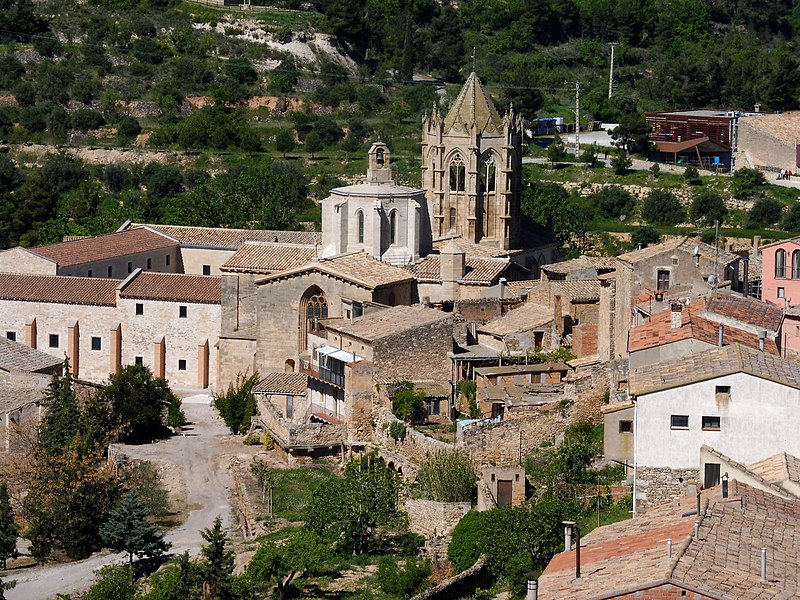Vallbona Abbey

Facts and practical information
Nestled in the serene landscapes of Catalonia, Spain, Vallbona Abbey stands as a testament to the religious and architectural history of the region. Officially known as the Monastery of Santa Maria de Vallbona, this Cistercian monastery dates back to the 12th century, offering visitors a glimpse into the medieval monastic life that once thrived within its walls.
The abbey is renowned for its remarkable blend of Romanesque and Gothic architectural styles, with the church being a particular highlight. The church features a stunning rose window, intricately carved stone work, and an impressive facade that speaks to the craftsmanship of the era. The cloisters, with their arched colonnades and peaceful courtyard, provide a tranquil space for contemplation and reflection, echoing the monastic life that once centered around prayer and community.
Vallbona Abbey has a rich history, having been an active religious community for women of noble birth since its foundation. The abbey played a significant role during the Cistercian expansion in Catalonia and has been a spiritual haven for centuries. It is one of the few female monasteries that has been continuously occupied since its inception, and today it still houses a small community of nuns who maintain the monastic traditions.
As a cultural heritage site, Vallbona Abbey attracts visitors not only for its spiritual significance but also for its historical value. It serves as a prime example of the monastic architecture of the Middle Ages and is part of the Cistercian Route, a tourist trail that includes other Cistercian monasteries in the area.
Vallbona Abbey – popular in the area (distance from the attraction)
Nearby attractions include: Castell de Ciutadilla, Guimerà.









